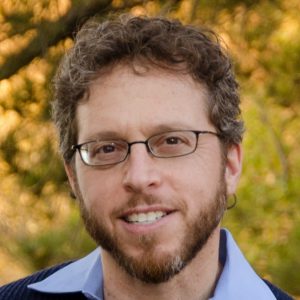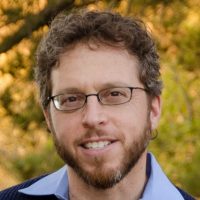Creating Community Through Jewish Cohousing
This week’s post is by Roger Studley, founder of Urban Moshav in Berkeley, CA.
Urban Moshav is an ambitious project: we aim to create “Jewish cohousing” communities around the United States. These communities will function like archetypal villages, where neighbors are deeply connected, interact frequently (in both the Jewish and general aspects of their lives), and where the void between the intimacy of family and the distance of society is filled by the intermediate cradle of community. This essay elaborates on (i) the cohousing model, (ii) the vision for implementing it in a Jewish context, and (iii) how Jewish cohousing relates to the four strategies identified in Jewish Megatrends as critical to the next phase of American Jewish life.
States. These communities will function like archetypal villages, where neighbors are deeply connected, interact frequently (in both the Jewish and general aspects of their lives), and where the void between the intimacy of family and the distance of society is filled by the intermediate cradle of community. This essay elaborates on (i) the cohousing model, (ii) the vision for implementing it in a Jewish context, and (iii) how Jewish cohousing relates to the four strategies identified in Jewish Megatrends as critical to the next phase of American Jewish life.
What is COHOUSING?
Cohousing is
a form of intentional neighborhood,
with extensive common facilities,
in which residents know their neighbors well,
and are deeply engaged in community life.
Common facilities include a dining hall and kitchen and possibly also indoor or outdoor recreation space, a lounge, a community garden, a children’s playroom, guest rooms, an art or exercise studio, a workshop, office space, and vehicles. Buildings are purposefully designed to support and promote community among residents. Individual homes are usually privately owned and have the full suite of amenities typical to private homes, including full kitchens. Residents share two to four meals together each week and a commitment to community, a respect for privacy, and the reward of daily connection, planned and impromptu gatherings, and being a part of each other’s lives. Cohousing was developed about 50 years ago in Denmark, and more than 1% of the Danish population currently lives in cohousing. There are 165 cohousing communities across the U.S.
What is JEWISH cohousing?
Jewish cohousing, or an “urban moshav,” is a modern village where neighbors engage one another through Jewish ritual, study, and culture, creating a milieu in which daily life is infused with Jewish life and where Jewish literacy, tradition, and values can therefore flourish. Residents will do many Jewish things together: celebrate Shabbat and holidays (while still participating in the shul of their choice), study Jewish text and topics, learn Hebrew, take on tikkun olam projects, say kaddish, etc. There is no requirement that residents “be” Jewish (nor could there be), but Jewish tradition is, nonetheless, a foundation of community life. A Jewish cohousing community or urban moshav can be thought of as:
- A multigenerational Moishe House where homes are owned by residents (rather than rented); each household lives in a separate unit (instead of in group quarters); and tenure is typically long-term (rather than 1-3 years).
- Year-round, all ages Jewish summer camp, integrated with daily life and responsibilities. (Due to these responsibilities, participants’ level of community participation will vary according to their current availability and needs.)
- Offering the sense of belonging and extended Jewish family that can be found in Israel.
Jewish cohousing communities also function as crossroads for the wider Jewish community, serving as a hub that brings together Jews from disparate backgrounds and with different levels of observance and affiliation to engage together in Jewish life and tradition. Furthermore, these communities participate in the life of the surrounding civic community, being good neighbors, hosting events, sponsoring service projects, and acting as ambassadors of the Jewish community.
Jewish cohousing and the future of American Jewish life
In his book Jewish Megatrends, Rabbi Sid Schwarz identifies four strategies for making American Jewish life more relevant to current and future generations of Jews: (i) exploring the wisdom of Jewish tradition; (ii) applying Jewish values to problems of social justice; (iii) creating community; and (iv) transcending the culture of consumerism to experience meaning, holiness, and purpose.
Jewish cohousing fits squarely into the community strategy. As Schwarz describes it, contemporary Jews have increasingly rejected top-down, centralized models of Jewish life, opting instead for those that empower the participant, models characterized by ownership as opposed simply to membership. It’s hard to be more empowered than to create, own, and live in your own year-round adult Jewish “summer camp”! And the specific purpose of the urban moshav is to create more personal and Jewish connection among community participants and with extended neighbors.
Even when empowering, however, much Jewish community in the U.S is episodic. The human (and Jewish) need for community, however, goes beyond episodic connection, and Jewish cohousing has the potential to meet this deeper need. For at least 50,000 years of human evolution we have lived in tribes and villages, where not only did we have close, daily connections to a group of people, but each of these people had similarly close connections to everyone else in the group. That is, until modern times we lived and thrived in groups characterized by frequent, proximal, and sustained interconnectedness. A synagogue can offer a limited version of this interconnectedness, as even the most involved members participate just once or twice per week. Many Jewish programs, typically retreats (such as Limud), create interconnectedness, but most of it fades after the program ends. Jewish summer camps provide interconnectedness – and have had great success connecting Jews to future Jewish life – but they too are short-term. In contrast, to borrow from the tagline of the 2016 Jewish Intentional Communities Conference, the urban moshav model goes beyond offering an experience in life, offering instead a life experience.
Jewish life survived through centuries of upheaval not only because of the values, ritual, laws, and texts at the heart of our tradition but also because proximal, sustained, interconnected Jewish communities were a life experience that embraced this tradition. Jewish cohousing can recreate these immersive communities. And Jewish ritual and values would be second nature to Jews raised in such communities, eliminating the need to try to re-engage them as unaffiliated adults.
From this foundation of proximal interconnectedness, Jewish cohousing communities can also support the other three strategies Schwarz identifies: They can be places of learning (chochma), where neighbors engage one another and the broader Jewish and civic communities. (Indeed, a residential venue may be more comfortable than a synagogue as a setting for people of different backgrounds to learn together.) They can be centers for ongoing social justice (tzedek) work, as are the residential (though short-term) Avodah and Repair the World programs for young Jews and the urban kibbutzim that have been developed in Israel in recent decades. And they offer a natural antidote to the heavily transactional nature of American culture, fostering relationships based not on status or power but on meaning (kedusha), connection, and belonging.
By creating Jewish cohousing, Urban Moshav adds to the Jewish landscape immersive, stable, close-knit communities where current and future generations of Jews can feel empowered and connected as they explore, experience, and express their Judaism.
____________________
Roger Studley is the founder of Urban Moshav, convener of the Berkeley Moshav effort to create Jewish cohousing in Berkeley, CA, and currently serves as the Hakhel advisor for six Jewish cohousing groups. He has been an organizer of independent minyanim (including San Francisco’s pluralist Mission Minyan), and co-chair of a Hazon Food Conference.



May 4, 2020 @ 11:44 am
This is fascinating, how would we do in a pandemic? Where do you want to do it, weather is important! Seriously, when I was in my early twenties, I worked for JFCS, and saw a neat Senior housing area, (1974) or so, near Daytona, Fl. And I’ve seen the Israeli communes, and remember South Beach of the ’60’s with the little stores and houses… keep us posted…m I have the book by Rabbi Sid Schwarz, Jewish Megatrends and just heard Rabbi Terry Bookman talk about the Paradigm shifts, keep us posted.